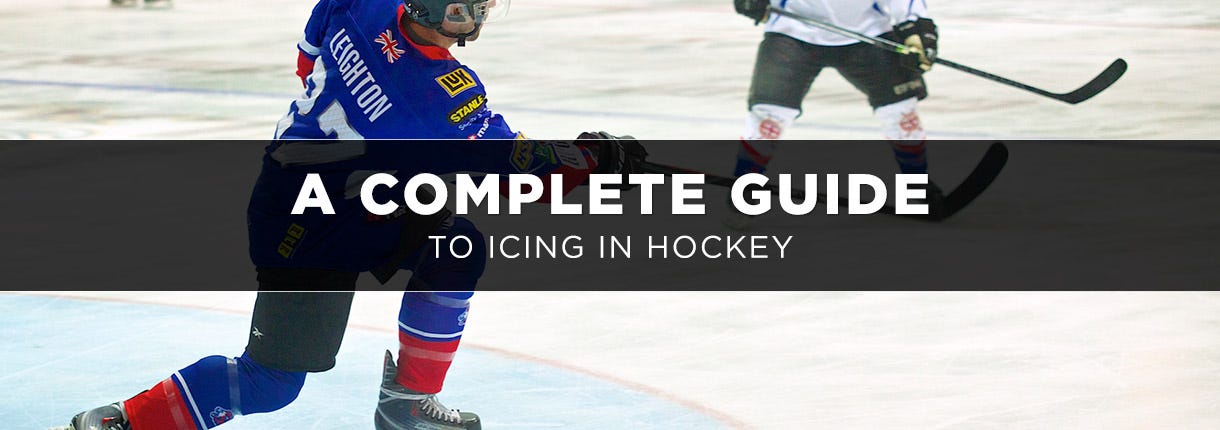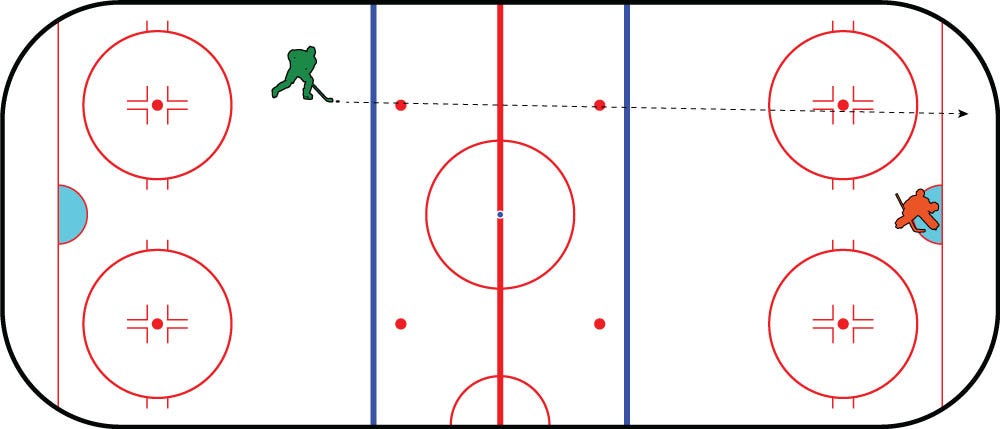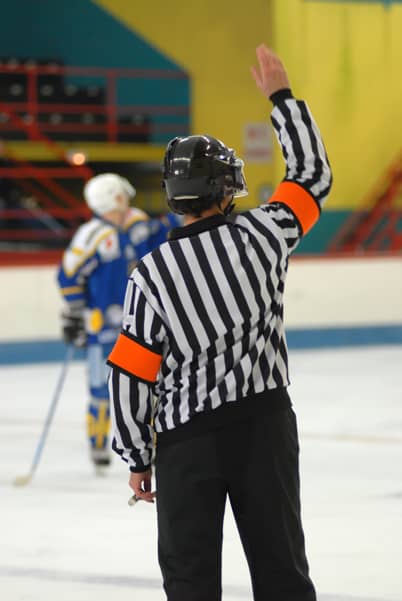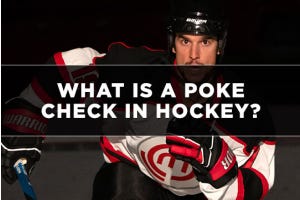A Complete Guide to Icing in Hockey

Icing in hockey is an essential rule of the game that a player must understand as it has many different types and factors. This guide will discuss the difference between each type of icing, why it is important, and more.
- What is Icing in Hockey?
- Images and Examples of Icing in Hockey
- Why Was the Icing Rule Created?
- Types of Icing Penalties
- When Are You Allowed to Ice the Puck?
What is Icing in Hockey?
Icing in hockey is when a player uses their hockey stick to shoot the puck from anywhere on their own side of the center red line down past the goal line of the opposing side (where the opposing team's goaltender is). Following this, the referee will stop the play, and an ensuing faceoff will be held inside the zone that iced the puck. However, there are certain in-game situations where icing will not be called.
Images and Examples of Icing in Hockey

Why Was the Icing Rule Created?
Hockey icing was created in 1937 as a way to eliminate delay tactics. Prior to the rule being introduced, teams that had a lead on their opposition late in games could simply shoot the puck all the way down the ice without the play stopping, thus wasting time on the clock. Not only was this frustrating for the players on the losing teams, but frustrating for the fans as well. Thus, icing (stoppage of play and faceoff in the infracting zone) was created to eliminate teams from firing the puck down the ice.
Types of Icing Penalties
Apart from the standard icing rule, players also have to be aware of three variations of icing in hockey.
Touch Icing
Players from the opposing team (excluding goaltender) must touch the puck in order for the referee to stop the play. If a player from the team that iced the puck touches the puck first, play continues. This rule leads to fast-paced races for the puck!
No-touch Icing
No-touch icing is simple. Play is automatically stopped when a player shoots the puck from behind the center red line and goes past the opposing team's goal line.
Hybrid Icing
Hybrid icing in hockey is when the puck is shot from behind the center red line and two players race down the ice, with the two farthest faceoff dots (opposing team that iced the puck) being the “finish line”, instead of the goal line. If a player of the team that iced the puck touches it first, the play continues. If the opposing team touches the puck first, play is stopped.
This style of hockey icing was introduced to reduce the number of injuries caused by players slamming into the boards during standard icing.
When Are You Allowed to Ice the Puck?
There are certain situations in ice hockey where icing in hockey is not called, however. They are:
- When a team is on the penalty kill
- When the referee determines that a player from the opposing team could have touched the puck before it crossed the goal line. Or if the referee determines that the action was an attempted pass
- When the puck is iced immediately by a player participating in a face-off
- If the goaltender leaves his goal crease and moves in the direction of the oncoming puck
- If the goaltender touches the puck
- If conditions for touch icing or hybrid icing are met
How Does the Referee Indicate Icing Has Occurred?
The referee will stop the play by blowing his whistle, with his arm straight up in the air, palm facing inwards. This motion signals icing in hockey.

Icing in Hockey FAQs
Are NHL icing rules different from other leagues?
Most major leagues around the world, including the NHL, use the hybrid icing rule. Most amateur hockey governing bodies worldwide, like USA Hockey, use the no-touch icing rule.
How do you stop icing in hockey?
A goalie can prevent icing in hockey by stopping the puck before it crosses the goal line. An icing in hockey will also not be called if a player from the team that shot the puck down the ice beats the opposing team to the puck before it crosses the faceoff dots in the attacking zone (two faceoff dots closest to opposing goalie).









Login and Registration Form
or
Create an account